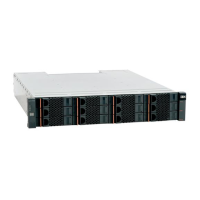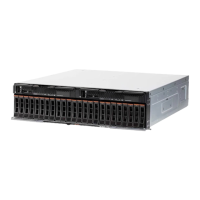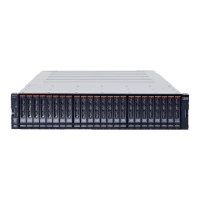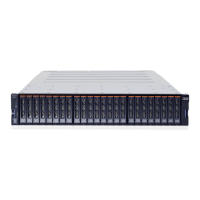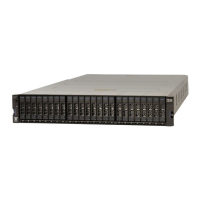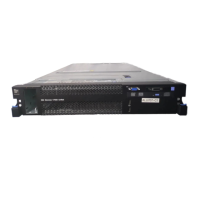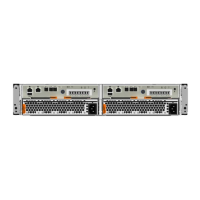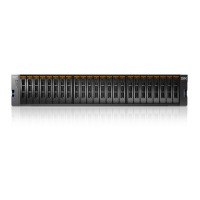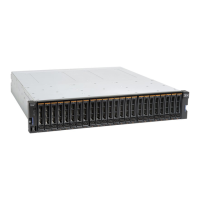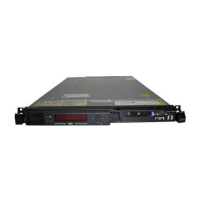Chapter 9. IBM Flex System V7000 Storage Node Copy Services 365
With an immediately available copy of the data, FlashCopy could be used in various business
scenarios, which include:
Rapidly creating consistent backups of dynamically changing data
FlashCopy can be used to create backups through periodic execution of FlashCopy; the
FlashCopy target volumes can be used to complete a rapid restore of individual files or the
entire volume through Reverse FlashCopy (using the -restore option).
The target volumes created by FlashCopy can be also used for backup to tape, by
attaching them to another server, which to a great extent relieves the production server.
After the copy to tape completes, the target volumes can be discarded if required or kept
as a rapid restore copy of the data.
Rapidly creating consistent copies of production data to facilitate data movement or
migration between hosts.
FlashCopy can be used to facilitate the movement or migration of data between hosts
while minimizing downtime for applications. FlashCopy allows application data to be
copied from source volumes to new target volumes while applications remain online. After
the volumes are fully copied and synchronized, the application can be stopped and then
immediately started on the new server accessing the new FlashCopy target volumes. This
mode of migration is swifter than other migration methods available through IBM Flex
System V7000 Storage Node, because the size or the speed of the migration is not as
limited.
Rapidly creating copies of production data sets for application development and testing.
Under normal circumstances, to perform application development and testing, data must
be restored from traditional backup media, such as tape. Depending the amount of data
and the technology in use, this process could easily take a day or more. With FlashCopy, a
copy can be created and online for use in just a few minutes. The time varies based on the
application and the data set size.
Rapidly creating copies of production data sets for auditing purposes and data mining.
Auditing or data mining normally require the usage of the production applications. This
situation can cause high loads for databases track inventories or similar data. With
FlashCopy, you can create copies for your reporting and data mining activities. This
situation reduces the load on your production systems, increasing their performance.
Rapidly creating copies of production data sets for quality assurance.
Quality assurance is an interesting case for FlashCopy. Because traditional methods
involve so much time and labor, the refresh cycle is typically extended. This reduction in
time required allows much more frequent refreshes of the quality assurance database.
9.2.2 FlashCopy functional overview
FlashCopy occurs between a source volume and a target volume. The source and target
volumes must be the same size. Multiple FlashCopy mappings (source-to-target
relationships) can be defined, and point-in-time consistency can be maintained across
multiple point-in-time mappings using consistency groups. FlashCopy consistency groups are
further described in “FlashCopy consistency groups” on page 370.
The minimum granularity that IBM Flex System V7000 Storage Node supports for FlashCopy
is an entire volume; it is not possible to use FlashCopy to copy only part of a volume.
Additionally, the source and target volumes must belong to the same IBM Flex System V7000
Storage Node, but they do not have to reside in the same storage pool.

